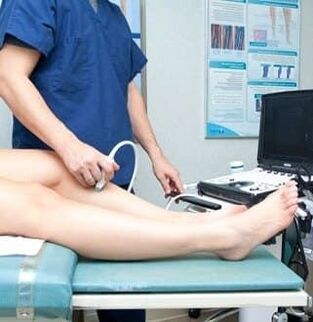Varicose veins are defects in a person's veins that lead to blood stagnation, nodules, and thrombosis. Blood through the veins does not flow continuously, but rises with the heart rhythm. The entire vein is a valve that does not allow venous blood to flow in the opposite direction. Violation of the valve, blood rises with difficulty, begins to stagnate and develops varicose veins. The symptoms of varicose veins of the lower extremities are visible to the naked eye. Consider what the dangers of the disease are, how varicose veins in women and men are treated, and which doctor treats varicose veins in the legs.
causes of varicose veins
The disease is surrounded by many myths that persist even among doctors. After noticing symptoms of varicose veins, the patient refuses a sedentary lifestyle or, conversely, intensive exercise. But in all the important studies, no correlation has been found between physical activity and the development of varicose veins. It's really useless to be quiet or eager to train, but it has little to do with varicose veins.
To specify risk groups, the following factors must be considered:
- old age;
- belong to women;
- excess weight;
- family history (genetic predisposition);
- smokes;
- Multiple births.
The effect of sauna and bathing on the development of varicose phlebitis has not been proven. This means you can visit the steam room and varicose veins won't affect you. You can avoid heat procedures, but the disease will manifest.
A causal relationship between the use of oral hormonal contraceptives and disease development has not been established. Wearing tights and high heels is thought to interfere with venous outflow, so many doctors recommend choosing comfortable shoes.
How to Identify Varicose Veins
The symptoms of varicose veins of the lower extremities are difficult to confuse with other diseases. it:
- Swelling and pathological fatigue in the extremities, a feeling of stiffness and heaviness, sometimes accompanied by itching;
- The appearance of spider veins and raised veins;
- In advanced cases - skin discoloration, the appearance of ulcers and dermatitis.
The danger of this disease is that blood clots can form in the damaged area. After breaking, they enter the lungs along with the bloodstream. This is already a dangerous situation because thromboembolism can lead to death. To prevent death, you should pay attention to the symptoms of internal varicose veins: swelling and changes in varicose veins on one side of the leg - if they used to be painless and tender, but now they are abscesses, this is a cause for urgent medical attention.
It is important to note that there is no difference in varicose vein symptoms between men and women, but special monitoring is required during pregnancy. Pregnant women often experience complications, so it is important to properly assess the risk of thrombosis and prescribe an effective treatment.
How to treat lower extremity varicose veins

One of the common misconceptions is that varicose veins can be cured with creams. When you search for "how to treat varicose veins, " you can find hundreds of pages pointing to websites that offer medications to treat varicose veins.
The ointment reduces fatigue and swelling, but does not eliminate cosmetic defects and serious complications.
For mild illnesses, wearing compression stockings and gymnastics can help.
For thrombosis, anticoagulants are prescribed, but only if there is no risk of bleeding complications.
In severe cases, only surgery can help. Depending on the indication, one of three approaches may be prescribed: sclerotherapy, phlebectomy, or endovascular occlusion. The most commonly used and successful laser occlusion is a sparing technique in which the vein is "welded" and excluded from the bloodstream. Within a few hours of surgery, patients can return to their normal lifestyle, even without the need for pain medication.
which doctor treats varicose veins
At the first symptoms of varicose veins in the legs, you should contact a phlebologist. Doctors who treat varicose veins will prescribe diagnostic procedures, mostly duplex scans, so that deep vein thrombosis is not missed. Conservative treatment, minimally invasive surgery, or surgery is then performed. No matter how bothersome the symptoms of varicose veins are, don't ignore seeing your doctor—it can save your life.

















